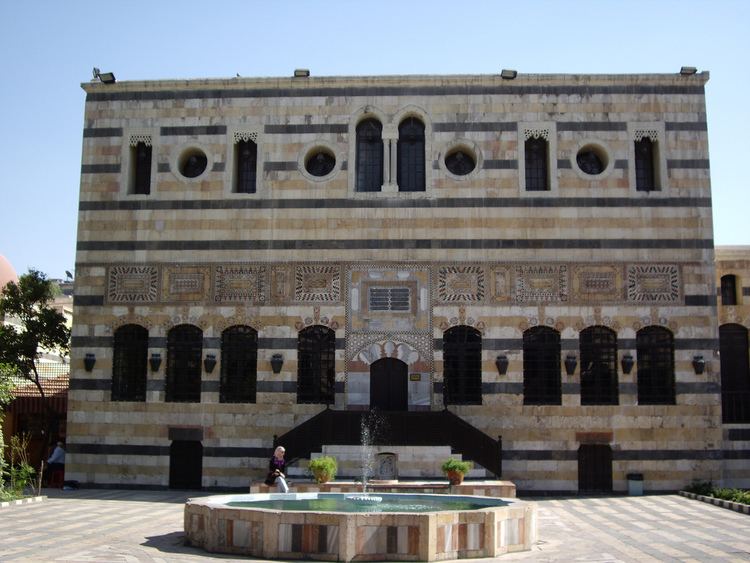Alternative names Qasr al-Azm Renovated 1945-1961 Floors 2 Client As'ad Pasha al-Azm | Completed 1750 Floor count 2 Opened 1750 Architectural style Ottoman architecture Function Palace, Museum | |
 | ||
Hours Open today · 9AM–5PMSaturday9AM–5PMSunday9AM–5PMMonday9AM–5PMTuesdayClosedWednesday(Revolution Day)9AM–5PMHours might differThursday9AM–5PMFriday9AM–5PM Similar Khan As'ad Pasha, Umayyad Mosque, National Museum of Damascus, Mount Qasioun, House of Saint Ananias | ||
Al azem palace syria 2010
Azm Palace (Arabic: قصر العظم) is a palace in Damascus, Syria which was originally built in 1750 as a residence for the Ottoman governor of Damascus As'ad Pasha al-Azm. The palace now houses the Museum of Arts and Popular Traditions.
Contents
labyrinth al azm palace in damascus syria
Architecture
The architecture is an excellent example of Damascene traditional houses. The structure consists of several buildings and two wings: the harem and the selamlik. The harem is the family wing, which was a private space for the residents (originally, the Azm family). This wing includes the kitchen, servant quarters, and the baths, which are a replica of the public baths in the city on a smaller scale. The salamlik is the guest wing, and it comprises the formal halls, reception areas and large courtyards with traditional cascading fountains.
Used in the building of this palace were several types of stones including limestone, sandstone, basalt, and marble, chosen to provide a natural decoration. The ceilings have painted wooden panels that display natural scenes.
Dr. Andrew Petersen, director of Research in Islamic Archaeology at the University of Wales Lampeter states that the use of ablaq (alternating courses of white limestone and black basalt) in this building is “A characteristic of the monumental masonry of Damascus.”
In 1925 under the French Mandate, the Azm Palace which was previously damaged during the Syrian Revolution was restored. It became a museum of arts and folk traditions. It received the Aga Khan Award for Architecture in 1983.
